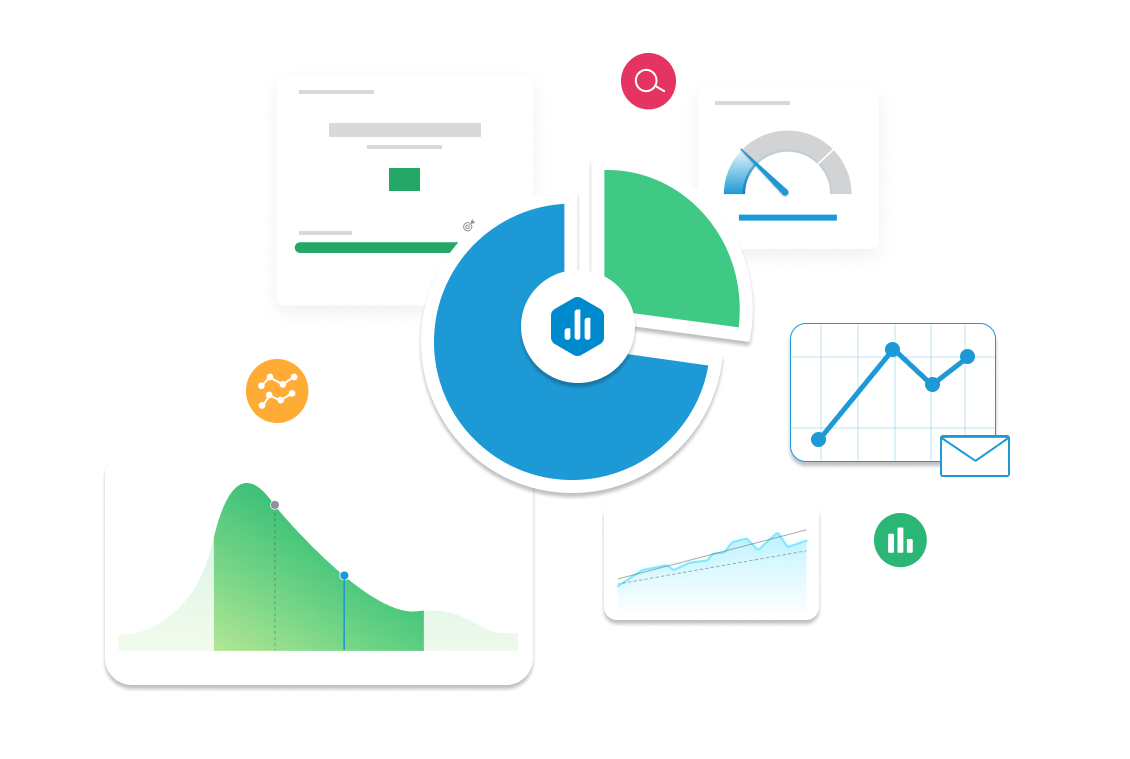Customer Retention
Discover how Customer Retention helps businesses track how well they keep existing customers. Learn how to measure, analyze, and optimize retention strategies to boost loyalty and revenue.

| Category |
Marketing |
|---|---|
| Type |
Lagging Indicator |
| Calculation |
Customer Retention Rate (%) = ((Customers at End of Period – New Customers) ÷ Customers at Start of Period) × 100 |
| Measure |
Tracks the percentage of customers retained over a given period, helping businesses assess customer satisfaction and long-term loyalty. |
| Data Sources: |
Salesforce, HubSpot, ProfitWell, Stripe, Chargebee, Recurly, Google Analytics. |
| Frequency |
Tracked monthly or quarterly to monitor retention trends and refine customer success strategies. |
Example target
Increase customer retention by 10% in Q3 by enhancing customer support, improving engagement, and personalizing user experiences.
Example Reports Use Case
A Customer Success Manager tracks retention rates to measure client satisfaction. If retention declines, they may implement loyalty programs, improve onboarding, or increase proactive communication.
What is Customer Retention Rate
Customer Retention Rate is a key metric that shows how well your business keeps existing customers over a specific period. It tells you the percentage of customers who stay with your company, rather than leaving or going inactive. High retention means customers are happy and loyal—key signs of a strong product or service.
This KPI is important because retaining customers is often more cost-effective than acquiring new ones. Loyal customers tend to spend more, refer others, and help your business grow more efficiently and profitably.
The basic formula is:
Customer Retention Rate = ((End Customers – New Customers) ÷ Start Customers) × 100
For example, if you started with 200 customers, gained 50 new ones, and ended with 210, your retention rate is ((210 – 50) ÷ 200) × 100 = 80%.
Understanding retention helps marketers, product teams, and executives improve customer experience and build long-term success.
How to Calculate Variants of Customer Retention Rate
The basic formula for Customer Retention Rate is:
((End Customers – New Customers) ÷ Start Customers) × 100
But depending on your goals, you can calculate it in different ways:
1. Monthly vs. Yearly Retention Rate
Track retention over a specific period.
Example (Monthly):
-
Start: 100 customers
-
Gained: 20 new customers
-
End: 110 customers
((110 – 20) ÷ 100) × 100 = 90% monthly retention
Monthly rates help spot short-term changes, while yearly rates show long-term loyalty.
2. Retention by Channel
Segment by source—like email, paid ads, or referrals—to see which channels bring in loyal customers.
Example: Customers from referrals might stay longer than those from ads.
3. Retention by User Type or Plan
Track retention by customer segment (e.g., free vs. premium users) to optimize offerings.
Why Customer Retention Rate Matters
Customer Retention Rate is a crucial KPI because it shows how well your business keeps customers over time. Retaining customers is often cheaper than acquiring new ones—and loyal customers tend to spend more, refer others, and support long-term growth. A high retention rate signals strong customer satisfaction, while a low rate may highlight product, service, or experience issues.
This metric directly supports goals like profitability, efficiency, and customer loyalty. For example, if retention drops after a price change or product update, it’s a red flag that needs attention. On the flip side, rising retention rates may show your onboarding, support, or engagement strategies are working.
Marketers use it to refine campaigns, product teams to improve features, and executives to measure overall business health. Tracking retention regularly helps identify churn patterns, shape better customer experiences, and guide smarter investments that boost revenue and long-term success. It’s a metric no team should overlook.
Related KPIs to Customer Retention Rate
Customer Retention Rate is closely connected to other key performance indicators that influence loyalty, profitability, and growth.
Retention Rate vs. Churn Rate
Churn rate is the flip side of retention—it shows the percentage of customers lost in a given time. If your retention rate is 80%, your churn rate is 20%. Monitoring both helps track customer behavior and identify when to step in with retention efforts.
Retention Rate vs. Customer Lifetime Value (LTV)
Higher retention usually leads to a higher LTV, as customers stay longer and spend more over time. If LTV is dropping, poor retention may be the cause. Improving retention is one of the most effective ways to boost long-term revenue.
Retention Rate vs. Net Promoter Score (NPS)
NPS measures loyalty and likelihood to recommend. A falling NPS could predict a drop in retention. Together, these metrics help assess satisfaction, loyalty, and future growth.



